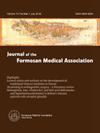The crucial role of centrioles in tooth growth and development
IF 2.6
3区 医学
Q1 MEDICINE, GENERAL & INTERNAL
引用次数: 0
Abstract
Background
Tooth development hinged on reciprocal interactions between enamel and dentin, shaping tooth structures. Centrioles influenced cellular direction, critical for stem cell differentiation. Aberrant centrioles contributed to conditions like Huntington's disease and cancers. Centriole-related gene mutations, like Pericentrin and Centrosomal P4.1-associated protein (CPAP), led to tooth abnormalities, microcephaly. Our study explored the role of centrioles in ameloblasts during molar growth, shedding light on tooth development mechanisms.
Methods
Tissue sections underwent immunofluorescence and hematoxylin and eosin staining to observe centriole changes in C57BL/6 mouse molars (1,3,5,7, and 9 days). Emphasis was placed on comparing centrioles in enamel and ameloblasts between Nestin-Cremediated Cpap conditional knockout in p53-deficient mice (Cpap(-/-) mice) and normal mice on the ninth day.
Results
In mouse molar tissue, ameloblasts and enamel underwent notable changes during the 1-9 days after birth. Centrioles in ameloblasts exhibited dynamic temporal localization, migrating away from cell nuclei towards enamel generation. Correlation between enamel thickness and centriole quantity suggested a relationship. Comparative analysis of normal and Cpap (-/-) mice on the ninth day revealed differences in enamel thickness, ameloblast elongation, and centriole distribution, highlighting the impact of CPAP deficiency on tooth development.
Conclusion
This study affirmed the positive contribution of ciliated centrioles in ameloblasts to enamel growth during the secretory phase. Increased centrioles correlated with enhanced enamel formation. Conversely, CPAP loss disrupted centriole organization, impacting ameloblast morphology and functionality, resembling enamel hypoplasia observed in microcephaly patients. Further research is essential to unravel molecular mechanisms and potential interactions with odontoblast centrioles.
中心粒在牙齿生长和发育中的关键作用
本文章由计算机程序翻译,如有差异,请以英文原文为准。
求助全文
约1分钟内获得全文
求助全文
来源期刊
CiteScore
6.50
自引率
6.20%
发文量
381
审稿时长
57 days
期刊介绍:
Journal of the Formosan Medical Association (JFMA), published continuously since 1902, is an open access international general medical journal of the Formosan Medical Association based in Taipei, Taiwan. It is indexed in Current Contents/ Clinical Medicine, Medline, ciSearch, CAB Abstracts, Embase, SIIC Data Bases, Research Alert, BIOSIS, Biological Abstracts, Scopus and ScienceDirect.
As a general medical journal, research related to clinical practice and research in all fields of medicine and related disciplines are considered for publication. Article types considered include perspectives, reviews, original papers, case reports, brief communications, correspondence and letters to the editor.

 求助内容:
求助内容: 应助结果提醒方式:
应助结果提醒方式:


